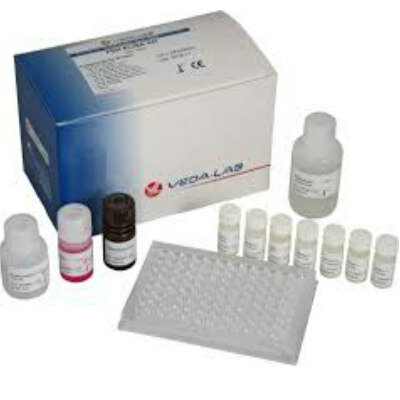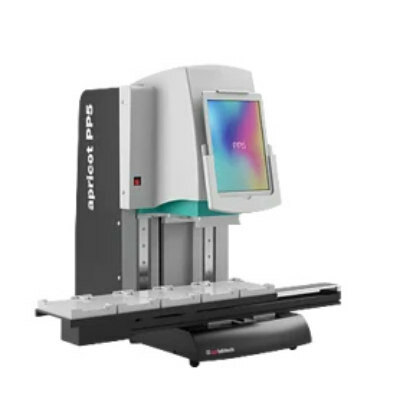Atypical Chronic Lymphocytic Leukemia Identified by Digital Microscopy
|
By LabMedica International staff writers Posted on 09 Sep 2014 |
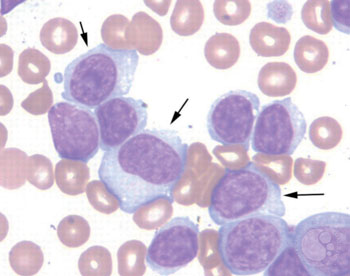
Image: Photomicrograph of a blood film from a patient with atypical chronic lymphocytic leukemia. Lymphocytes were primarily small with round nuclei, condensed chromatin and scant cytoplasm. Approximately 20% of the lymphocytes had the morphologic features of prolymphocytes with finely dispersed chromatin and central nucleoli (arrows) (Photo courtesy of the American Society of Hematology).
Digital microscopy has been used to morphologically classify chronic lymphocytic leukemia (CLL) patients as atypical chronic lymphocytic leukemia (aCLL) or typical CLL (tCLL), and determine the prevalence of prognostic markers in each group.
In tCLL, which are approximately 80% of all cases, over 90% of the circulating lymphocytes are small-to-medium sized with relatively normal morphology, except for a characteristically clumped, chunky chromatin pattern.
Scientists at the Memorial Sloan Kettering Cancer Center (New York, NY, USA) evaluated the lymphocyte morphology on archived blood films of 97 CLL patients, and results of their prognostic marker analysis at diagnosis were obtained between January 2010 and December 2011. All patients included had a confirmed diagnosis of CLL; availability of results for complete blood count, immunophenotyping, immunoglobulin heavy chain V-III region VH26 (IgVH) mutation status, and fluorescence in situ hybridization (FISH) for trisomy 12 and deletions of 13q14, 6q, 17p (tumor protein 53, TP53), and 11q (ataxia telangiectasia mutated, ATM); and an archived peripheral blood film. The age of the archived blood films varied between 8 and 26 months.
The archived Romanowsky-stained blood films were reexamined using the Cellavision AB digital imaging system (Lund, Sweden). Additional lymphocyte subtypes were created within Cellavision for manual subclassification of variant forms seen in aCLL including prolymphocyte, large atypical lymphocyte, and cleaved lymphocyte. The team found that 27% of patients with CLL in their study were morphologically classified as aCLL, similar to that reported in the literature. The aCLL group had a higher prevalence of trisomy 12, unmutated IgVH, and cluster of differentiation 38 (CD38) expression markers associated with poor prognosis.
The authors concluded that using digital microscopy to morphologically identify lymphocyte subtypes and sub classify patients with CLL as tCLL or aCLL is a feasible, rapid, and inexpensive screening tool. Stable morphology consistent with tCLL over time may eliminate the need for more frequent and expensive genetic monitoring, while an unexpected change in morphologic sub classification from tCLL to aCLL may trigger a more extensive workup and a change in therapeutic approach. The study was published in the August 2014 issue of the International Journal of Laboratory Hematology.
Related Links:
Memorial Sloan Kettering Cancer Center
Cellavision AB
In tCLL, which are approximately 80% of all cases, over 90% of the circulating lymphocytes are small-to-medium sized with relatively normal morphology, except for a characteristically clumped, chunky chromatin pattern.
Scientists at the Memorial Sloan Kettering Cancer Center (New York, NY, USA) evaluated the lymphocyte morphology on archived blood films of 97 CLL patients, and results of their prognostic marker analysis at diagnosis were obtained between January 2010 and December 2011. All patients included had a confirmed diagnosis of CLL; availability of results for complete blood count, immunophenotyping, immunoglobulin heavy chain V-III region VH26 (IgVH) mutation status, and fluorescence in situ hybridization (FISH) for trisomy 12 and deletions of 13q14, 6q, 17p (tumor protein 53, TP53), and 11q (ataxia telangiectasia mutated, ATM); and an archived peripheral blood film. The age of the archived blood films varied between 8 and 26 months.
The archived Romanowsky-stained blood films were reexamined using the Cellavision AB digital imaging system (Lund, Sweden). Additional lymphocyte subtypes were created within Cellavision for manual subclassification of variant forms seen in aCLL including prolymphocyte, large atypical lymphocyte, and cleaved lymphocyte. The team found that 27% of patients with CLL in their study were morphologically classified as aCLL, similar to that reported in the literature. The aCLL group had a higher prevalence of trisomy 12, unmutated IgVH, and cluster of differentiation 38 (CD38) expression markers associated with poor prognosis.
The authors concluded that using digital microscopy to morphologically identify lymphocyte subtypes and sub classify patients with CLL as tCLL or aCLL is a feasible, rapid, and inexpensive screening tool. Stable morphology consistent with tCLL over time may eliminate the need for more frequent and expensive genetic monitoring, while an unexpected change in morphologic sub classification from tCLL to aCLL may trigger a more extensive workup and a change in therapeutic approach. The study was published in the August 2014 issue of the International Journal of Laboratory Hematology.
Related Links:
Memorial Sloan Kettering Cancer Center
Cellavision AB
Latest Hematology News
- New Scoring System Predicts Risk of Developing Cancer from Common Blood Disorder
- Non-Invasive Prenatal Test for Fetal RhD Status Demonstrates 100% Accuracy
- WBC Count Could Predict Severity of COVID-19 Symptoms
- New Platelet Counting Technology to Help Labs Prevent Diagnosis Errors
- Streamlined Approach to Testing for Heparin-Induced Thrombocytopenia Improves Diagnostic Accuracy
- POC Hemostasis System Could Help Prevent Maternal Deaths
- New Test Assesses Oxygen Delivering Ability of Red Blood Cells by Measuring Their Shape
- Personalized CBC Testing Could Help Diagnose Early-Stage Diseases in Healthy Individuals
- Non-Invasive Test Solution Determines Fetal RhD Status from Maternal Plasma
- First-Of-Its-Kind Smartphone Technology Noninvasively Measures Blood Hemoglobin Levels at POC

- Next Gen CBC and Sepsis Diagnostic System Targets Faster, Earlier, Easier Results
- Newly Discovered Blood Group System to Help Identify and Treat Rare Patients
- Blood Platelet Score Detects Previously Unmeasured Risk of Heart Attack and Stroke
- Automated Benchtop System to Bring Blood Testing To Anyone, Anywhere
- New Hematology Analyzers Deliver Combined ESR and CBC/DIFF Results in 60 Seconds
- Next Generation Instrument Screens for Hemoglobin Disorders in Newborns
Channels
Clinical Chemistry
view channel
‘Brilliantly Luminous’ Nanoscale Chemical Tool to Improve Disease Detection
Thousands of commercially available glowing molecules known as fluorophores are commonly used in medical imaging, disease detection, biomarker tagging, and chemical analysis. They are also integral in... Read more
Low-Cost Portable Screening Test to Transform Kidney Disease Detection
Millions of individuals suffer from kidney disease, which often remains undiagnosed until it has reached a critical stage. This silent epidemic not only diminishes the quality of life for those affected... Read more
New Method Uses Pulsed Infrared Light to Find Cancer's 'Fingerprints' In Blood Plasma
Cancer diagnoses have traditionally relied on invasive or time-consuming procedures like tissue biopsies. Now, new research published in ACS Central Science introduces a method that utilizes pulsed infrared... Read moreMolecular Diagnostics
view channel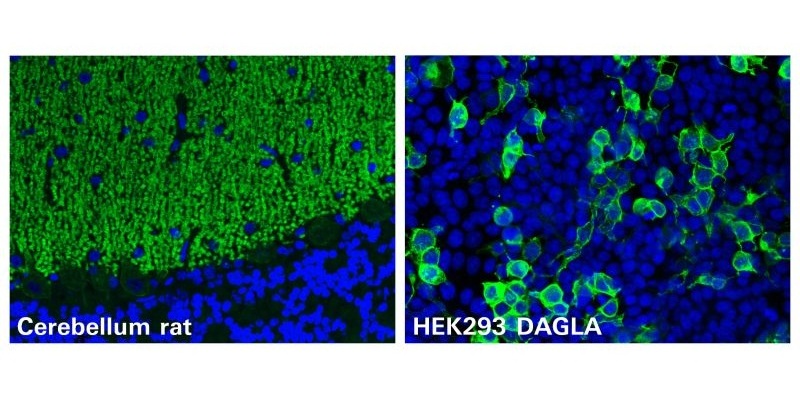
Novel Autoantibody Against DAGLA Discovered in Cerebellitis
Autoimmune cerebellar ataxias are strongly disabling disorders characterized by an impaired ability to coordinate muscle movement. Cerebellar autoantibodies serve as useful biomarkers to support rapid... Read more
Gene-Based Blood Test Accurately Predicts Tumor Recurrence of Advanced Skin Cancer
Melanoma, an aggressive form of skin cancer, becomes extremely difficult to treat once it spreads to other parts of the body. For patients with metastatic melanoma tumors that cannot be surgically removed... Read moreImmunology
view channel
Stem Cell Test Predicts Treatment Outcome for Patients with Platinum-Resistant Ovarian Cancer
Epithelial ovarian cancer frequently responds to chemotherapy initially, but eventually, the tumor develops resistance to the therapy, leading to regrowth. This resistance is partially due to the activation... Read more
Machine Learning-Enabled Blood Test Predicts Immunotherapy Response in Lymphoma Patients
Chimeric antigen receptor (CAR) T-cell therapy has emerged as one of the most promising recent developments in the treatment of blood cancers. However, over half of non-Hodgkin lymphoma (NHL) patients... Read moreMicrobiology
view channel
Handheld Device Delivers Low-Cost TB Results in Less Than One Hour
Tuberculosis (TB) remains the deadliest infectious disease globally, affecting an estimated 10 million people annually. In 2021, about 4.2 million TB cases went undiagnosed or unreported, mainly due to... Read more
New AI-Based Method Improves Diagnosis of Drug-Resistant Infections
Drug-resistant infections, particularly those caused by deadly bacteria like tuberculosis and staphylococcus, are rapidly emerging as a global health emergency. These infections are more difficult to treat,... Read more
Breakthrough Diagnostic Technology Identifies Bacterial Infections with Almost 100% Accuracy within Three Hours
Rapid and precise identification of pathogenic microbes in patient samples is essential for the effective treatment of acute infectious diseases, such as sepsis. The fluorescence in situ hybridization... Read morePathology
view channel
Novel UV and Machine Learning-Aided Method Detects Microbial Contamination in Cell Cultures
Cell therapy holds great potential in treating diseases such as cancers, inflammatory conditions, and chronic degenerative disorders by manipulating or replacing cells to restore function or combat disease.... Read more
New Error-Corrected Method to Help Detect Cancer from Blood Samples Alone
"Liquid biopsy" technology, which relies on blood tests for early cancer detection and monitoring cancer burden in patients, has the potential to transform cancer care. However, detecting the mutational... Read more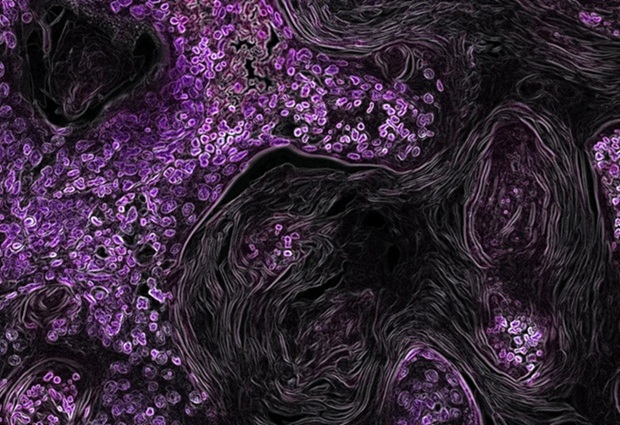
"Metal Detector" Algorithm Hunts Down Vulnerable Tumors
Scientists have developed an algorithm capable of functioning as a "metal detector" to identify vulnerable tumors, marking a significant advancement in personalized cancer treatment. This breakthrough... Read more
Novel Technique Uses ‘Sugar’ Signatures to Identify and Classify Pancreatic Cancer Cell Subtypes
Pancreatic cancer is often asymptomatic in its early stages, making it difficult to detect until it has progressed. Consequently, only 15% of pancreatic cancers are diagnosed early enough to allow for... Read moreTechnology
view channel
Pain-On-A-Chip Microfluidic Device Determines Types of Chronic Pain from Blood Samples
Chronic pain is a widespread condition that remains difficult to manage, and existing clinical methods for its treatment rely largely on self-reporting, which can be subjective and especially problematic... Read more
Innovative, Label-Free Ratiometric Fluorosensor Enables More Sensitive Viral RNA Detection
Viruses present a major global health risk, as demonstrated by recent pandemics, making early detection and identification essential for preventing new outbreaks. While traditional detection methods are... Read moreIndustry
view channel
Cepheid and Oxford Nanopore Technologies Partner on Advancing Automated Sequencing-Based Solutions
Cepheid (Sunnyvale, CA, USA), a leading molecular diagnostics company, and Oxford Nanopore Technologies (Oxford, UK), the company behind a new generation of sequencing-based molecular analysis technologies,... Read more
Grifols and Tecan’s IBL Collaborate on Advanced Biomarker Panels
Grifols (Barcelona, Spain), one of the world’s leading producers of plasma-derived medicines and innovative diagnostic solutions, is expanding its offer in clinical diagnostics through a strategic partnership... Read more




